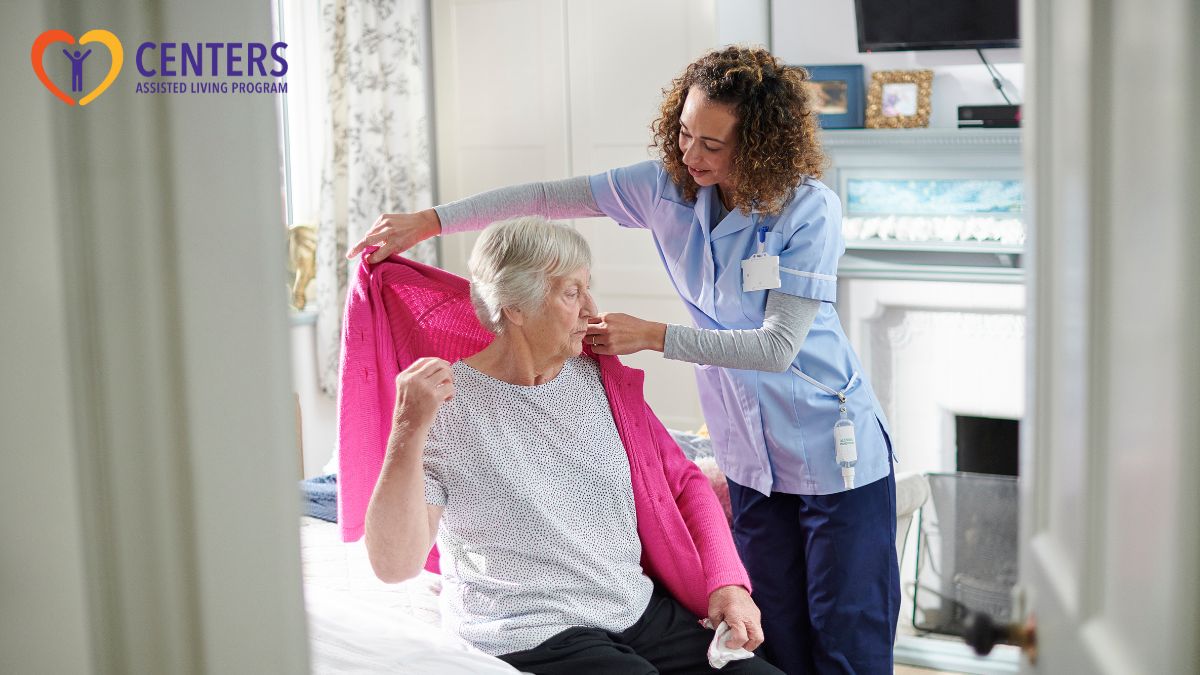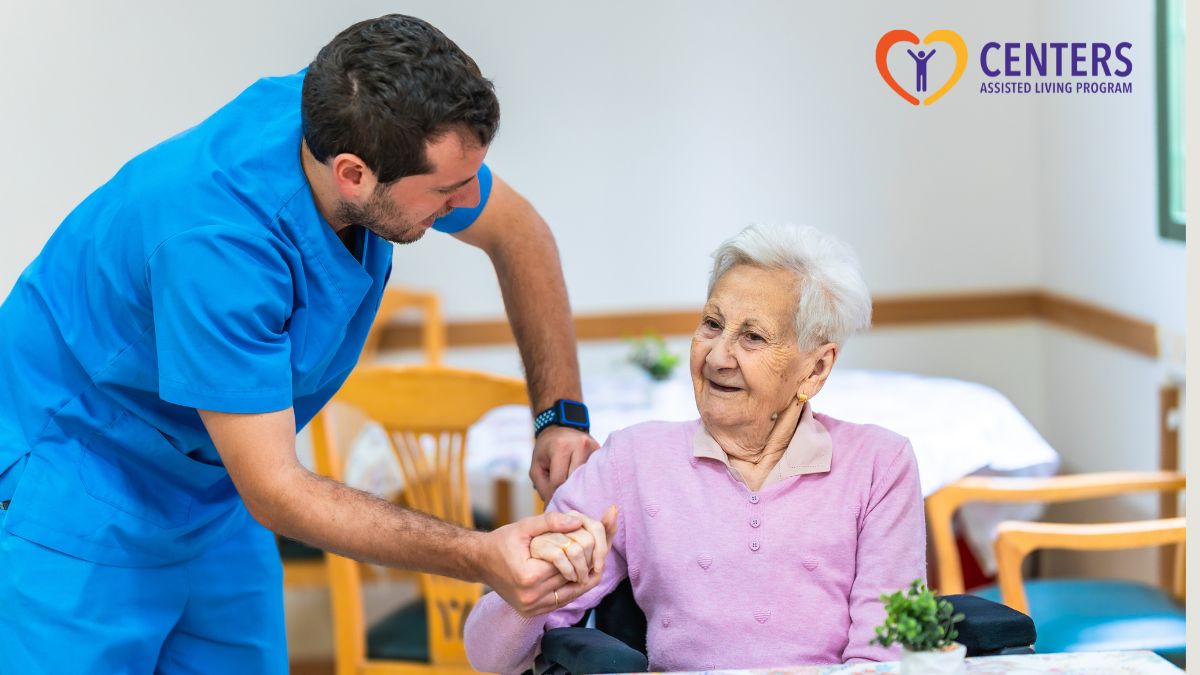Assisted living care levels progress from light help to extensive support. Level 1 includes reminders, housekeeping, and safety checks. Level 2 adds hands-on help with bathing, dressing, and transfers. Level 3 extends to toileting, mobility escorts, and medication management without 24-hour skilled nursing.
Support looks very different from one stage to another. By breaking down the levels, you’ll see how each stage builds on the last and what that means for care, costs, and planning ahead.
 Level 1 in Assisted Living Levels of Care: Light Daily Help and Safety Checks
Level 1 in Assisted Living Levels of Care: Light Daily Help and Safety Checks
Sure, the first level is often about giving just enough help to keep routines steady. Think of it as gentle support that blends into the day.
Medication Reminders and Mealtime Cueing
Medication and meal reminders are a big part of this stage in levels of assisted living care. A missed pill or skipped meal may seem small, but over time it adds up. Here’s what usually helps:
- Gentle reminders to take medications
- Cues for meals and hydration
- Steady pill and meal schedules to support memory
- Medication list review after move-in or a hospital stay
Here’s a tip: keeping the same times for pills and meals helps with memory while lowering anxiety when routines feel predictable.
Housekeeping, Laundry, and Quick Check-Ins
Light household help often falls under senior assisted living care. Common supports include:
- Housekeeping to clear floors and reduce fall risks
- Laundry care with clean and safe handling of linens
- Daily or evening check-ins to spot early changes in mood or mobility
At this stage, these lighter supports build the foundation for higher levels of care in the long run.
Level 2 Within Levels of Assisted Living Care: Hands-On Help With Multiple ADLs
By the time someone reaches assisted living care level 2, support changes from gentle to hands-on help. You might notice this stage centers on daily basics like bathing, dressing, and safe transfers.
National data shows how common these needs are: nearly 75% of residents need help bathing, about 60% with dressing, and 57% with transfers. At this stage of assisted living care, staff often:
- Schedule bath or shower days.
- Lay out clothing for easier choices.
- Use gait belts or safe transfer techniques.
Regular Supervision for Safety and Routine
More structure is added here, often with scheduled supervision. Consistent routines around meals, dressing, and hygiene calm anxiety and support memory.
Safety oversight in an assisted living care home also tackles real risks: over 1 in 4 older adults experiences a fall yearly, and 6 in 10 people living with dementia will wander at least once. Regular checks, door monitoring, and planned activities keep days safer and more predictable.
 Level 3 Care: Extensive Daily Assistance Without Skilled Nursing
Level 3 Care: Extensive Daily Assistance Without Skilled Nursing
At Level 3, support expands to cover more complex routines and close monitoring. Continence support becomes central at this stage of levels of assisted living care. Care often includes:
- Scheduled toileting plans
- Regular safety and skin checks
- Faster response times to call lights
You may want to ensure first and foremost if toileting supplies are included or billed separately. Knowing that up front avoids surprises.
Assisted Living Care Home: Support for Complex Routines and Limited Mobility
Daily routines often involve multiple steps, and limited mobility makes them harder to manage in an assisted living care home. Here’s what Level 3 typically covers:
- Escorts to meals, therapy, and activities
- Timed cueing for medications and health appointments
- Monitoring for pain, weakness, or medication changes
Polypharmacy affects nearly two-thirds of U.S. seniors, so careful tracking reduces confusion and fall risks.
Assisted Living Care Costs: Base Rate Plus Level-of-Care Fees
Costs can look different from one community to another, but the structure is usually the same. A base rate covers housing, meals, and essential services. Added fees then depend on the levels of assisted living care a resident needs.
It helps to see everything spelled out clearly before move-in. Look for a fee schedule that lists:
- What the base rate includes
- How and when care levels change
- Medication management and escort charges
- Incontinence supplies or laundry services
- Annual rate adjustments
Some services, like hospice or home health, may be billed separately.
Compare Community Rates to Elder Home Care and Nursing Homes
Numbers put the choices in perspective. The 2024 national median for senior assisted living care is about $5,900 per month. Nursing homes cost more, roughly $9,277 monthly for a semi-private room and $10,646 for private.
In contrast, home health aides average $34 per hour, which can make around-the-clock support pricier than assisted living. If you’ve been exploring elder home care, comparing these rates helps balance cost with the social and safety benefits that assisted living brings.
Care Plan Reviews: Adjust Support as Needs Change
Care plans aren’t one-and-done. They vary as health, mobility, and daily needs change. That’s why regular reviews are built into all levels of assisted living care.
Most states require assessments at move-in and at set intervals, plus updates after any major health event. A good review should cover:
- Daily living activities like bathing, dressing, toileting
- Mobility status and fall risk
- Medication lists and side effect checks
Find Assisted Living Care Near Me for Next Steps
Sometimes support needs move beyond assisted living’s scope. Short-term stays in skilled nursing may follow a hospital discharge, while progressive dementia or complex medical care may call for specialized settings. Strong communities handle transitions by:
- Flagging changes in condition early
- Contacting the primary clinician
- Sharing updated assessments and medication lists
If you’re weighing options and still in constant search for “assisted living care near me,” ask how handoffs are managed so moves are smoother and safer.
Frequently Asked Questions
How do you put someone in assisted living?
Place someone in assisted living by assessing safety, daily care needs, and risks. Visit licensed communities, compare staffing and services, and review contracts with care tiers. Complete required health assessments and service plans, then prepare essentials and share routines to ensure smooth, personalized support from the start.
How is most assisted living care usually paid for?
Most assisted living care is paid privately through savings, pensions, or long-term care insurance. Medicare excludes room, board, and custodial care. Medicaid may cover limited personal care but rarely housing, while veterans may use Aid & Attendance. Coverage varies by state and facility acceptance.
What’s the difference between assisted living and nursing home care?
The main difference between assisted living and nursing home care is medical support. Assisted living provides housing, meals, and help with daily tasks but not 24-hour nursing. Nursing homes deliver round-the-clock skilled nursing, rehabilitation, and physician-directed care, regulated federally rather than by states.
Plan Ahead with the Right Support
Understanding the different stages of care is the first step toward making informed choices for your loved one. From light reminders to extensive daily assistance, each level offers a clearer picture of when to adjust support and how costs may change. Families searching for assisted living care in New York often find that knowing these differences makes planning less overwhelming.
At Centers Assisted Living, we’re here to guide you through those decisions with care and clarity. Reach out today to explore your options.


